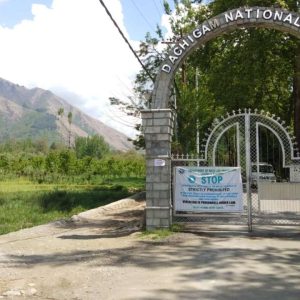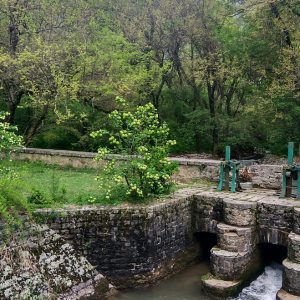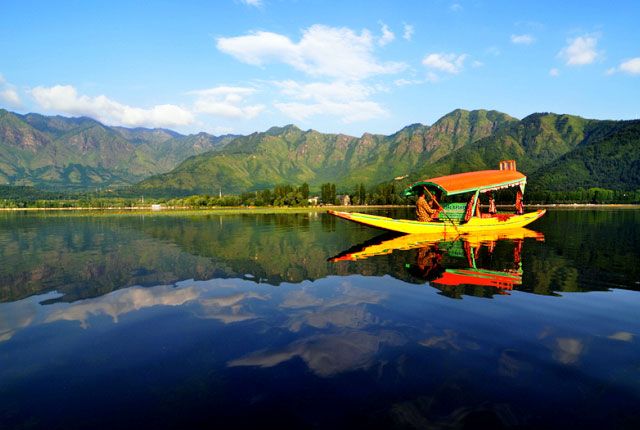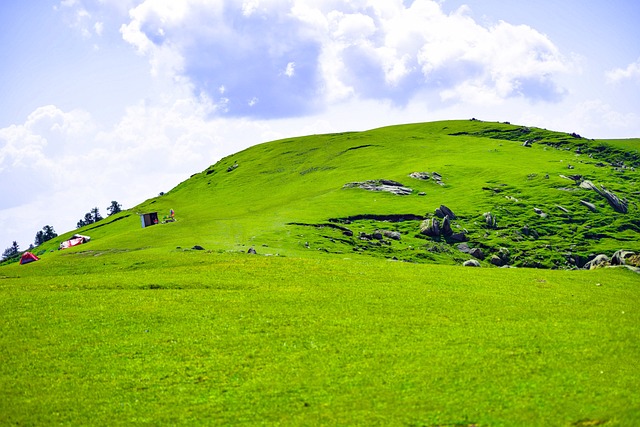
Dachigam National Park : Kashmir’s Wildlife Sanctuary
Table of Contents
ToggleOverview
The interestingly conceived mix of wildlife, natural beauty, and ecological significance of the quiet periphery of the state capital Srinagar, located in Jammu and Kashmir, is Dachigam National Park. With an area of 141 square kilometers, it forms an essential part of the conservation endeavors in the country. Notably popular, it houses the endangered species called Kashmir stag, or Hangul; the park is rich with beautiful wild life and nature. Verdant forests, beautiful alpine meadows, and sparkling water bodies make Dachigam an untouched paradise for all nature lovers, trekkers, wildlife enthusiasts, and photographers. Be it the wildlife, the scenery, or trekking routes, Dachigam National Park has something for everyone.
This will be a well-explained insight into the Dachigam National Park and how such a park came to being from history, geography of features, biodiversity, along with many trekking opportunities in itself to make this park be included as one worthy enough of visit.





Location and Access of Dachigam National Park
Dachigam National Park lies in the scenic Kashmir Valley, approximately 22 kilometers from Srinagar. It lies at the south-eastern edge of Srinagar and is nestled between the magnificent Zabarwan Mountain Range to its north and the Shankaracharya Hill to its south. The park lies in an altitude ranging from 1,600 meters up to 4,300 meters above the sea level. The altitude builds up a range of different ecological zones.
Dachigam National Park
Dachigam National Park can be approached from Srinagar which has its road, rail and air connectivity. Nearest airport from Srinagar is Sheikh ul-Alam International Airport which also can be referred as Srinagar Airport; it is at a distance of 30 minutes from the park. Dachigam National Park has a good connectivity through roads to the major cities in India; for this journey to the park, people can hire taxi/rent car.
The drive from Srinagar to Dachigam is smooth and pictorial, with a view of the Kashmir Valley, lush landscapes, and snow-capped mountains in the background. Once you reach the entrance, you can explore its varied trails, ranging from easy walks to challenging treks.
History and Formation of Dachigam National Park
The historical value of Dachigam National Park is inherently connected to the conservation of the Kashmir Stag or Hangul, the park’s most characteristic and usual inhabitant. Long since a species emblematically associated with natural heritage of this region, the Kashmiri stag was grossly threatened by hunting and habitat destruction during the early part of the 20th century. At the time, it faced a threat of extinction as serious as that ever encountered at the lowest recorded.
It was because of this need for conservation that Dachigam became a game reserve in 1910. It was a bold decision by the then rulers of Jammu and Kashmir to save the peculiar wildlife of the region. With the years, the importance of the park increased as the Hangul population continued to decline, and in 1981 it was declared a national park officially.
The main objective of the park is to conserve the critically endangered Kashmir Stag, while it tries to maintain the biodiversity of the entire Kashmir Valley in balance. Since its protected status has begun showing the species to be recovering, public awareness of the problems of conservation also started building up.
Geographical Diversity of Dachigam National Park
Dachigam National Park is very rich with an incredibly diverse geography supporting an extreme variation of plant and animal life. It has two zones into which it is broadly categorized as the lower Dachigam zone and the upper Dachigam zone.
Lower Dachigam Zone
The lower zone is characterized by dense temperate forests, dominated by deodar, oak, pine, and willows. Such a zone offers rich habitats for several herbivores, small mammals, and plenty of bird species. Dense forests are quite an ideal place for species like Musk Deer and Wild Boar.
The lower zone consists of the Dachigam River. This river runs through the park, meandering through it, and is a lifeline for the park ecosystem. Water courses in the part have supported a very wide aquatic life, with freshwater fishes and aquatic plants. It also plays an important role in irrigation for sustaining vegetation.
Upper Dachigam Zone
With ascension, the landscape gets to be very rough and bare. Absolutely it contrasts the lush region below. Alpine meadows, high-altitude grasslands, and rocky lands are all included in this category. Wildflowers, blue poppies, and alpine grasses are available here less densely but they are there.
This area is a favorite home of animals like Himalayan Brown Bear and Snow Leopard, well adapted to the extreme cold climatic conditions. It also is the zone which provides panoramic views of the valley below so it becomes an absolute favorite among trekkers and photographers alike.
Dachigam National Park Flora
Flora of Dachigam National Park varies and luxuriant as much as fauna; in other words, vegetation of this park varies with the changes in altitudinal variation in the park. Varying climatic conditions allow many species of plants in this region.
- Temperate Forests
The lower ranges of the park are covered by dense temperate forests. It is replete with a wide variety of coniferous and deciduous trees. These are the major food and shelter sources for most herbivorous mammals as well as smaller species of wildlife. The tree species found in this range include oak, poplar, willows, and Chilgoza pine. These serve as an important source of resources for the biodiversity in the park.
- Alpine Meadows
Dachigam National Park has sufficient Alpine Meadows at higher elevations during summer and spring, during which it is abashedly covered with flowering plants. The rare ones within them are delphinium, blue poppy and primula. Flowers Blooming increases nectar from various species of bees as well as butterflies; richening the overall life present at such an ecosystem.
- Aquatic Flora
The Dachigam River is home to many species of aquatic plants. Hydrophytes like the water lily, cress, and aquatic mosses thrive in pale, cold waters. These plant species serve as home and source of food for several small aquatic animals.
Fauna of Dachigam National Park
One of the most prominent features of Dachigam National Park is wildlife. The park houses thousands of species, many of which are endangered or vulnerable species. The diversity of species in the park makes it one of the most biologically diverse areas of the Kashmir Valley.
- Kashmir Stag (Hangul)
The Kashmir Stag is the most iconic species of the park and the centerpiece of the park’s conservation efforts. This deer species is critically endangered with probably about 200 individuals remaining in the wild. The Hangul has long, antlered horns and a reddish-brown coat, making it one of the most majestic creatures found in the park. Conservation efforts in Dachigam National Park have gradually brought the population of the Hangul into stable conditions and sightings of the stag are relatively frequent.
- Himalayan Brown Bear
One of the bigger predators, Himalayan Brown Bears have been tracked from the upper slopes of Dachigam. Being solitary animals, they tend to inhabit alpine meadows and forests. They do most of their activity when the climate is warm; they prepare for winter ahead when they hibernate.
- Leopards and Snow Leopards
Leopards and the elusive snow leopard prefer high altitudes in Dachigam National Park. Snow leopards are rarely seen and nearly threatened. They are extremely cunning and blend; therefore, they are not so difficult to spot, but a little bit of luck will present a trekker with the chance of seeing these majestic cats.
- Musk Deer
The most interesting species are the Musk Deer of Dachigam, though they are rarely seen as these shy and solitary animals are not easy to spot. Musk Deer have a peculiar musk gland placed beside their tail, traditionally used in perfumes and medicine.
- Wild Boar and Other Mammals
The wild boar being an omnivorous one is found in the lowest reaches of the park and makes a significant contribution as an important scavenger. Such other mammals as jackal, raccoon dog and many species of rodents appear to be common in large parts of the park.
Birdlife in Dachigam National Park
Dachigam is a bird watchers’ paradise because of many species of birds found in several types of ecosystems. In this park, there are several species of waterfowl, raptors, and songbirds.
- Golden Eagle and Peregrine Falcon
Dachigam is known to have many birds of prey. Some of the most common are the Golden Eagle and Peregrine Falcon. The Golden Eagle has magnificent wingspans and long, sharp talons, making it a favorite at high altitudes above the park. The Peregrine Falcon, among the world’s fastest birds, also enjoys hunting at higher elevations around the park.
- Himalayan Vulture
Other bird species that can be seen flying over the park are the large-winged Himalayan Vulture. These are carrion clean-up specialists whose presence might help in preventing the spread of diseases as carrion could possibly lie strewn around the park.
- Songbirds and Waterfowl
One could see various species of songbirds, which includes robins, warblers, and finches being at Dachigam that was at much smaller altitude. Waterfowls such as swans, ducks, and herons come to the waterfalls inside the park. Therefore, the national park is very heaven for all bird lovers.
Dachigam National Park Treks
The treks in Dachigam National Park are open to all age groups and categories, from beginners to experienced travelers. Trekking trails cover most of the scenic, biologically valuable parts of the park: its dense forests, alpine meadows, and high-altitude lakes.
1. Dachigam to Aru Valley Trek
This is a moderate trek, which takes tourists from Dachigam to the beautiful Aru Valley. The track passes through dense forests and provides excellent opportunities for viewing wildlife everywhere. Aru Valley features meadows and beautiful countryside villages. It is serene and peaceful.
2. Trek from Dachigam to Gadsar Lake
The Gadsar Lake trek is advised for the toughest treks. This high-altitude trek takes tourists to the very beautiful Gadsar Lake, a very beautiful lake, amidst all snow, at an altitude. The route is tough and calls for great physical stamina; however, the view at the lake is worth every effort.
3. Dachigam to Yusmarg Trek
The other scenic and relatively easier trek is the route that leads from Dachigam to Yusmarg, a beautiful meadow known for serenity. The trek provides magnificent views of the Pir Panjal Range and gives trekkers an opportunity to experience both temperate forests and alpine meadows.
Conservation Efforts and Future of Dachigam National Park
Dachigam National Park, at the center of conservation in the Kashmir Valley, has for long been an active force in overall preservation, be it the control of poaching and unapproved logging or the creation of laws that support wildlife protection.
Anti-poaching patrols and wildlife monitoring are some of the main strategies adopted to protect the endangered species found in the park. Last but not least, collaboration with neighboring communities has been effective tools in informing and engaging them in sustainable activities.
Importance of Ecotourism
Eco-tourism has been proved to be a great tool for resource conservation, wildlife preservation and educating people. As a responsible tourist destination Dachigam National Park offers its unique wonders while ensuring its resources are properly protected.
Best Time to Visit Dachigam National Park
The best time to visit Dachigam National Park is during the period from April to October. It is the time the park is open to the tourists and pleasant weather prevails. It is the time to enjoy optimal wildlife viewing and trekking. The spring and summer times, April-June, are quite good for birdwatching and spotting wildlife.
It’s closed during October to March due to the high intensity of snowfall, yet those are the peak times for the snow leopard and Himalayan brown bear aficionados who have been eager to view them.
Conclusion
Dachigam National Park is among the great places for all those wild animal, trekking enthusiasts or for nature lovers. It is going to be a memorable experience with all its landscapes, diversified flora and fauna, and a great history. Whether to spot the Kashmir Stag, trek along alpine meadows, or to get in touch with nature’s serenity, Dachigam promises to be a place of wonder. Through constant conservation efforts and eco-tourism, Dachigam National Park is sure to boom more and remain an epitome of successful wildlife preservation in India.
How to book Kashmir tour?
Contact a travel agency that specializes in Kashmir tours. You can reach out to the following for assistance:
- Phone:
- +91 7889 655596
- +91 7006 891267
- Email:
Inquire about tour packages, itineraries, and pricing, and confirm your booking for a memorable winter experience!
People Also Ask
Where is Dachigam National Park located?
Dachigam National Park is located in the Indian state of Jammu and Kashmir, approximately 22 kilometers from Srinagar, the summer capital of Jammu & Kashmir.
What is the best time to visit Dachigam National Park?
The best time to visit Dachigam National Park is during the summer months, from April to October, as the weather is pleasant and wildlife is more active. Winter (November to March) can be quite cold and inaccessible due to snow.
What animals can be found in Dachigam National Park?
Dachigam National Park is home to the endangered Hangul deer (Kashmir stag), along with species like Himalayan brown bear, leopards, wild boars, musk deer, and numerous bird species.
What is the significance of Dachigam National Park?
Dachigam National Park is significant for being a sanctuary for the critically endangered Hangul deer, also known as the Kashmir stag. It plays a vital role in wildlife conservation.
Is Dachigam National Park open to tourists year-round?
Dachigam National Park is generally open to tourists from April to October. The park may remain closed during heavy snowfall and harsh winter conditions.
How to reach Dachigam National Park?
The park can be accessed via road from Srinagar, which is approximately 22 km away. The nearest airport is Sheikh ul-Alam International Airport, Srinagar. The nearest railway station is also in Srinagar.
What are the main attractions in Dachigam National Park?
Apart from wildlife, visitors are attracted to the lush landscapes, rivers, and streams. The park’s serene environment and its wildlife, especially the Hangul deer, are the main draws.
Are there guided tours available at Dachigam National Park?
Yes, guided tours are available for visitors. Experienced guides can take you through the park, explaining the biodiversity, flora, and fauna of the area.
What is the best way to explore Dachigam National Park?
The best way to explore Dachigam National Park is by walking or taking a jeep safari, guided by a trained professional who is familiar with the terrain and wildlife.
What is the wildlife population like in Dachigam National Park?
The park is known for its diverse wildlife, including the endangered Hangul deer. It also supports species like leopards, wild boar, brown bears, and many bird species, with over 150 species of birds recorded.
Can you see Hangul deer in Dachigam National Park?
Yes, Dachigam National Park is one of the last remaining natural habitats for the critically endangered Hangul deer, and sightings of this elusive species are a major attraction.
Are there any accommodation options near Dachigam National Park?
While there are no accommodations inside the park, there are several hotels, guesthouses, and resorts in Srinagar, which is around 22 km from the park.
Is photography allowed in Dachigam National Park?
Yes, photography is allowed in the park, but it is recommended to be cautious not to disturb the wildlife. Carrying professional cameras and lenses is popular among wildlife photographers.
What is the area size of Dachigam National Park?
Dachigam National Park covers an area of about 141 square kilometers, with a variety of landscapes, including forests, grasslands, and alpine meadows.
What is the climate like in Dachigam National Park?
Dachigam National Park experiences a temperate climate, with warm summers (15-25°C) and cold winters (sub-zero temperatures). Snowfall occurs between November and March.
Can I go camping in Dachigam National Park?
Camping is not typically allowed inside the park, as it is a protected area. However, there are campsites in nearby regions of Kashmir that may offer opportunities for outdoor stays.
Is Dachigam National Park open for wildlife photography?
Yes, wildlife photography is allowed, and the park offers an excellent opportunity to capture the diverse fauna, especially the Hangul deer and other wildlife in natural settings.
Is there any entry fee for Dachigam National Park?
Yes, there is an entry fee for visiting Dachigam National Park. The fee may vary for Indian and foreign tourists, with additional charges for photography and guided tours.
What are the best activities in Dachigam National Park?
The best activities include wildlife safaris, nature walks, bird watching, and photography. The serene environment also makes it ideal for relaxation and enjoying the scenic beauty of the park.
How is the flora in Dachigam National Park?
The flora of Dachigam National Park is diverse, with forests of conifers, alpine meadows, and oak trees. It also has a variety of medicinal plants and shrubs.
Can I visit Dachigam National Park with children?
Yes, Dachigam National Park can be visited with children, but care must be taken due to the terrain. It’s best to visit with a guide, as they can ensure a safe and educational experience.
What should I wear when visiting Dachigam National Park?
It is advisable to wear comfortable walking shoes, warm clothing (especially in winter), and carry rain gear depending on the season. During summer, light, breathable clothing is recommended.
What are the regulations for visiting Dachigam National Park?
Visitors must follow the park’s guidelines, including not disturbing wildlife, not littering, and respecting the park’s environment. Permits may be required for entry and photography.
How is the connectivity to Dachigam National Park?
The park is well-connected to Srinagar via roads. Regular buses and taxis are available from the city. The nearest airport is in Srinagar, and the nearest railway station is also in Srinagar.
Can I see other species besides the Hangul deer in Dachigam National Park?
Yes, Dachigam National Park is home to a variety of wildlife, including Himalayan brown bears, wild boars, leopards, musk deer, and over 150 species of birds, making it a rich biodiversity hotspot.





Golden Wheels is hands-down the best for group travel in Kashmir! Every detail was taken care of, and our driver, Shabir Bhai, was always punctual. Truly a 5-star experience!
A perfect tour for thrill-seekers! We enjoyed trekking to Tarsar Lake, an off-road jeep ride to Doodhpathri, and even tried snowboarding in Gulmarg. The guides were fantastic, ensuring safety and fun throughout the trip!